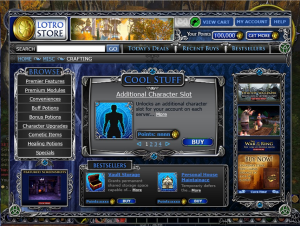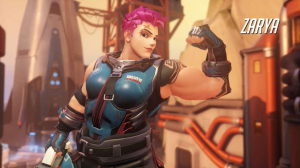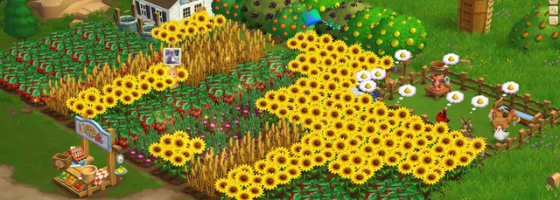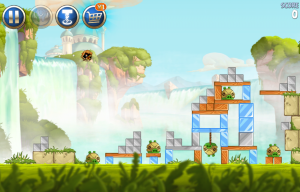On a recent cast, I spoke with Mike Lee of Fakedice about their upcoming game Dicetiny. On the cast, we got on the discussion of the difficulty of breaking into new markets for up and coming developers. One of the points that came up was a good lesson that game developers need to learn, and it has to do with trying to copy the success of other games.
Being Number One:
Any industry alive has its kings; the people and companies that became #1 and the top examples of their field: Shelby, Spielberg, Beatles, and the Game Industry in no exception.
Whether it’s by luck or craft or a combination, there are many examples of video games and their companies that have become the giants of their markets and the standards that other games are judged by. And when someone becomes #1, there will always be others trying to chase them and take the crown.
In the Game Industry, we’ve seen this in the past with genres that dominated the market, as well as lately with the cloning problem on the mobile market. When an idea becomes big, you can bet that someone is going to try and make a game similar to cash in.
The reason is twofold. First, everyone knows that this idea works, because someone has made it big off of it. And second, with the top game out, you can analyze and break it down to try and figure out how it works a lot easier compared to making something from scratch. It’s akin to different car manufacturers looking at their competitors to see how they can stand out and make something similar, but better.
A major example of this from the Game Industry, and the basis for this post, was World of Warcraft. When Blizzard released WOW, they created one of the best selling games of all time and led to the MMO craze of the last decade. Afterwards, we saw a number of different developers all try to copy WOW or get close to its numbers. Guess what happened? The majority of them failed; leading to games and studios either being shut down or restructured for a smaller success under the F2P banner.

LOTRO was one of many MMOs made during the last decade trying to be the next WoW, and had to be restructured to stay alive
The new example of this would undoubtedly be the MOBA genre thanks to League of Legends taking it mainstream, which ironically, Blizzard is now chasing after them with Heroes of the Storm.
Every few years, it seems like the Industry plays a game of chase with the current big name, and it leads to many studios failing and sometimes closing because of it. In the Indie space, this is no exception.
Creative Sharing:
Indie development as we’ve talked about has grown considerably large over the last decade. The space is now famous for giving birth to some of the most inventive and diverse games on the market: Kerbal Space Program, Undertale, Minecraft, Braid and so many more examples.
Part of the reason for this success was the willingness to experiment with designs that wouldn’t be possible on a AAA budget. You can’t get experimental when you have tens of millions of dollars and dozens of employees banking on one idea. The lower development budgets also have the impact of making it easier to break down Indie successes compared to AAA. While an Indie studio doesn’t have the funding to copy Call of Duty’s graphical power, they can do it with a game like Minecraft or pixel graphics.
As we already mentioned, this also is the same thing that happens in the mobile space with Indie developers as well. Due to the limited gameplay options and the limitations of the platform, it makes it very easy to be able to take an existing idea and run with it. This is why we see a number of clones of games; maybe they’ll feature different graphics and slightly altered levels, but they play exactly the same as the game they were copied from.
While developers will say that learning from other developers is a major part of growing game design, straight up trying to compete with someone else, either indirectly or directly is not a good decision.
David vs. Goliath:
There is a huge difference between entering the market as the first one to do it right, and being any number of new developers trying to compete. The problem is that any new games are going to be immediately compared to the big name; consumers’ time and money are both limited, they’re only going to want the best. Right off the bat, if you game lacks any of the features of the #1 game, it will never be able to compete; case in point, the early versions of UPlay and Origin compared to Steam.
Another point is if you’re trying to do something different. There is a fine line between making something so similar that someone will just play the original, vs. making something so different that it won’t capture fans of the original. We hear time and time again of developers trying to base their earnings off of getting some of the fan base from a bigger game instead of creating their own, that most often will lead to failure, because you are once again trying to compete with someone bigger.
For Indie developers, there is the added pressure if you are working with a publisher to try and add elements of popular games or designs to your title to make it pop more.
That’s part of the conversation we had on the podcast, and how their former publisher wanted Fakedice to add in more F2P elements to try and capture that market, even though the game wasn’t built around it.
But the biggest problem and the one that will most likely kill your game is what it means to compete with the #1 game on the market. When you become the top game, it gives your title both recognition and clout among consumers and the rest of the industry.
Everyone knows who King is and Candy Crush Saga, but do they know the names of all the competitors that came following CCS’s success? Storefronts are going to want to advertise games like Team Fortress, World of Warcraft and Minecraft, not the umpteenth game that is trying to be like those titles. Another nail in the coffin is if your game is so similar to the top game; people will just play that one, because it already has the goodwill and recognition established.
Competing with someone who is already making millions ahead of you is never going to work, as their lead guarantees that they will have more money and more ways to stay on top. Going back to King, they were one of the few mobile developers to run TV advertisements for their games; further increasing their recognition and brand.
To wrap up, we’re going to talk about how one studio has managed to be the outlier and made this work; becoming a king in their own right.
The Blizzard Method:
Blizzard Entertainment is one of the undisputed kings of the Game Industry; releasing some of the most highly regarded games of all time and having one of the best track records out of any game company around. Blizzard’s best games are all based on existing designs and genres, be it MMO with World of Warcraft, CCG with Hearthstone and so on.
Now, I’ve spent over 1,000 words talking about why you shouldn’t go after the #1 game in a market, but I know that you’re going to ask this question: Why can Blizzard do it? Blizzard is one of the most analytical game companies in the world, and their method is something that every game designer should learn.

Blizzard’s design process is about refining mechanics and concepts to create something original and uniquely Blizzard
Blizzard’s best games are all about refinement: Taking ideas and mechanics from other genres and figuring out how to grow them into something else, and more importantly, something original from the studio.
Instead of making a straight Magic the Gathering clone, they made the accessible and newcomer-friendly Hearthstone, or instead of making another Everquest, they took what worked and grew that into World of Warcraft.
While Blizzard does go after new markets by looking at the top games, they do it by innovating and changing things around to make it a “Blizzard game.” You can say that League of Legends and Heroes of the Storm are both MOBA games, but no one can say that Heroes of the Storm simply copies League of Legends.
As a brief tangent, this has also allowed Blizzard to create unified branding around these games, so that none of their games directly compete with each other, and they can support and synergize between them.
In this way, Blizzard is always seen as someone who is chasing the next big thing instead of chasing someone else.
Learning and Growing:
Being able to refine an idea and make it something original is one of the cornerstones of good game development and the secret to avoid being seen as just another clone of someone else. A good game is never described as” It’s just like X, but with Y,” but,” This game is inspired by X, but does Y and Z differently.”
It’s always tempting to look at another game and try to make something similar, but just taking a game’s design wholesale is not how you grow a business. While we all can’t be like Blizzard, it’s important to be able to examine and evolve gameplay, not just repeat it, if you want to succeed at both game design and the industry.
If you enjoyed this post, please consider donating to the Game-Wisdom Patreon campaign. Your donations will help to keep the site running and allow me to keep putting out great content.


